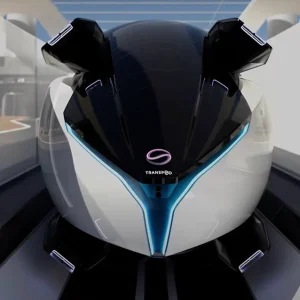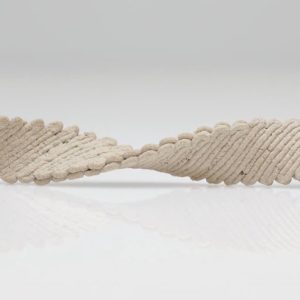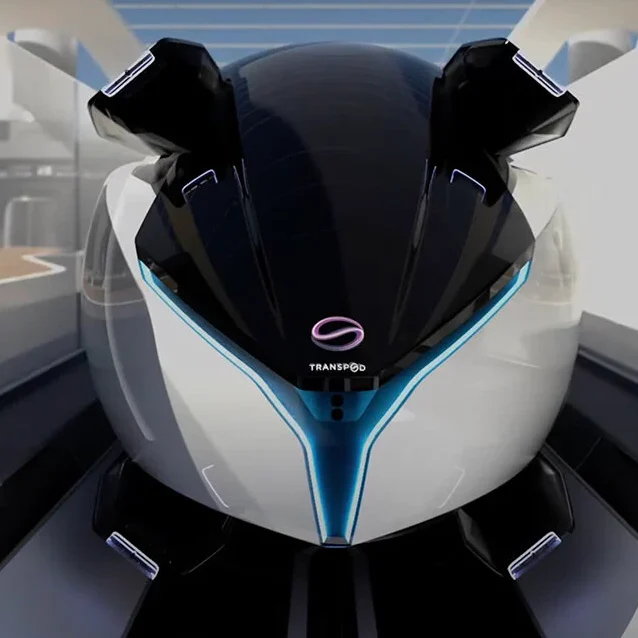Link About It: This Week’s Picks
Talking to animals, ultra-high-speed public transport, Seoul art fairs and more from around the web

TransPod’s Fully Electric “FluxJet” Transportation System Can Travel 1,000 km/h
 In development by Canadian mobility startup TransPod to carry passengers and cargo, the FluxJet ultra-high-speed ground transportation system employs contactless power transmission, enabling it to reach speeds of 1000km/h. The FluxJet will travel along the TransPod Line, which is already under construction. Once it is in operation, “it will cost passengers approximately 44% less than a plane ticket to travel the corridor and help reduce CO2 emissions by 636,000 tonnes per year,” according to designboom. Read more about the groundbreaking system (which is similar to an airplane-train hybrid) and the emerging science of “veillance flux” that makes it possible at designboom.
In development by Canadian mobility startup TransPod to carry passengers and cargo, the FluxJet ultra-high-speed ground transportation system employs contactless power transmission, enabling it to reach speeds of 1000km/h. The FluxJet will travel along the TransPod Line, which is already under construction. Once it is in operation, “it will cost passengers approximately 44% less than a plane ticket to travel the corridor and help reduce CO2 emissions by 636,000 tonnes per year,” according to designboom. Read more about the groundbreaking system (which is similar to an airplane-train hybrid) and the emerging science of “veillance flux” that makes it possible at designboom.
Image courtesy of TransPod
3D-Printing Wood that Purposefully Morphs
 Wood’s tendency to warp has long been a hindrance to designers, but researchers from the Hebrew University of Jerusalem are trying to change that. Using wood-waste micro-particles (called “wood flour”) and cellulose nanocrystals and xyloglucan (natural binders extracted from plants), the researchers developed an environmentally friendly water-based ink that harnesses wood’s ability to morph. When the ink is used in a 3D printer, the researchers were able to determine how the wood morphs, based on the way its laid down. (Printing concentric circles, for instance, leads to shrinkage akin to a Pringle chip.) With this knowledge, the team can program a print speed and form that creates a purposeful morphed shape with the goal of printing more complicated structures, like chairs, down the line. “Eventually, it might be feasible to license the technology for home use so consumers could design and print their own wooden objects with a regular 3D printer,” says principal researcher Eran Sharon. Read more about this at Core77.
Wood’s tendency to warp has long been a hindrance to designers, but researchers from the Hebrew University of Jerusalem are trying to change that. Using wood-waste micro-particles (called “wood flour”) and cellulose nanocrystals and xyloglucan (natural binders extracted from plants), the researchers developed an environmentally friendly water-based ink that harnesses wood’s ability to morph. When the ink is used in a 3D printer, the researchers were able to determine how the wood morphs, based on the way its laid down. (Printing concentric circles, for instance, leads to shrinkage akin to a Pringle chip.) With this knowledge, the team can program a print speed and form that creates a purposeful morphed shape with the goal of printing more complicated structures, like chairs, down the line. “Eventually, it might be feasible to license the technology for home use so consumers could design and print their own wooden objects with a regular 3D printer,” says principal researcher Eran Sharon. Read more about this at Core77.
Image courtesy of American Chemical Society
Frieze Art Fair’s Collaborative Inaugural Edition in Seoul
 On 2 September, Frieze debuts its first edition in an Asian country, in Seoul, South Korea. It will run alongside this year’s installment of the Korea International Art Fair (Kiaf), which was founded back in 2002. In a first-of-its-kind collaborative model, these fairs will together host nearly 350 domestic and international galleries in Seoul’s COEX Center. The roster includes acclaimed Korean artists, regional art organizations like Silverlens Galleries and Taka Ishii Gallery, and renowned blue chip institutions like Hauser & Wirth, Lehmann Maupin, Perrotin and Mendes Wood DM. Read more about both fairs and the abundance of enthusiasm surrounding them at The Art Newspaper.
On 2 September, Frieze debuts its first edition in an Asian country, in Seoul, South Korea. It will run alongside this year’s installment of the Korea International Art Fair (Kiaf), which was founded back in 2002. In a first-of-its-kind collaborative model, these fairs will together host nearly 350 domestic and international galleries in Seoul’s COEX Center. The roster includes acclaimed Korean artists, regional art organizations like Silverlens Galleries and Taka Ishii Gallery, and renowned blue chip institutions like Hauser & Wirth, Lehmann Maupin, Perrotin and Mendes Wood DM. Read more about both fairs and the abundance of enthusiasm surrounding them at The Art Newspaper.
Image of Park Seo-Bo’s “Ecriture No.070512” (2007), mixed media with Korean Hanji paper on canvas, courtesy Tokyo Gallery
Machine Learning Attempts to Translate Animal Communication
 Neuroscientists at the Max Planck Institute for Brain Research in Germany have deployed machine-learning algorithms to decode communication recorded in mole rat colonies, and documented the importance of varying dialects. This technology (already utilized in the analysis of human language) has also been applied to mice, bats, crows, sperm whales and more—sometimes opening fledgling pathways for humans to communicate back. Though we are far from a “Google Translate for animals,” the analysis has begun to reveal more to the nuance of animal communication. Read about the unexpected breakthroughs, the potential to ascertain meaning and other next steps at The New York Times.
Neuroscientists at the Max Planck Institute for Brain Research in Germany have deployed machine-learning algorithms to decode communication recorded in mole rat colonies, and documented the importance of varying dialects. This technology (already utilized in the analysis of human language) has also been applied to mice, bats, crows, sperm whales and more—sometimes opening fledgling pathways for humans to communicate back. Though we are far from a “Google Translate for animals,” the analysis has begun to reveal more to the nuance of animal communication. Read about the unexpected breakthroughs, the potential to ascertain meaning and other next steps at The New York Times.
Image courtesy of Mehgan Murphy, Smithsonian’s National Zoo
International Council of Museums Finalizes New Definition of “Museum”
 After a vote at their 26th general conference this August, the International Council of Museums (ICOM) has refreshed their definition of the term “museum,” that they previously established in the 1970s. The updated definition—which now incorporates the terms diversity, sustainability and accessibility—was finalized after 18 months of commentary and four rounds of consultation. 487 members were in agreement, while 23 voted against it and 17 abstained. ICOM’s president, Alberto Garlandi, notes that it’s a “great step forward,” though recognizes that it’s not perfect. Read the complete definition at Artforum.
After a vote at their 26th general conference this August, the International Council of Museums (ICOM) has refreshed their definition of the term “museum,” that they previously established in the 1970s. The updated definition—which now incorporates the terms diversity, sustainability and accessibility—was finalized after 18 months of commentary and four rounds of consultation. 487 members were in agreement, while 23 voted against it and 17 abstained. ICOM’s president, Alberto Garlandi, notes that it’s a “great step forward,” though recognizes that it’s not perfect. Read the complete definition at Artforum.
Image courtesy of Musée d’Orsay
Link About It is our filtered look at the web, shared daily in Link and on social media, and rounded up every Saturday morning. Hero image of Park Seo-Bo’s “Ecriture No.070512” (2007), mixed media with Korean Hanji paper on canvas, courtesy Tokyo Gallery












